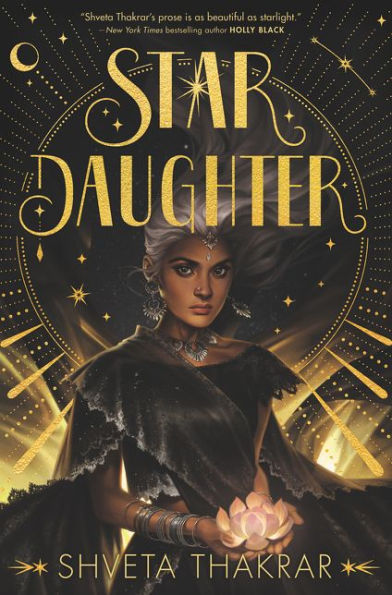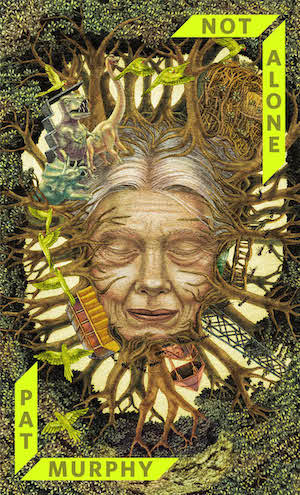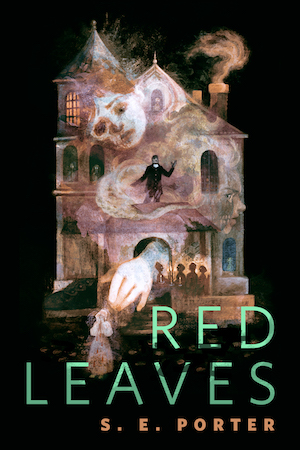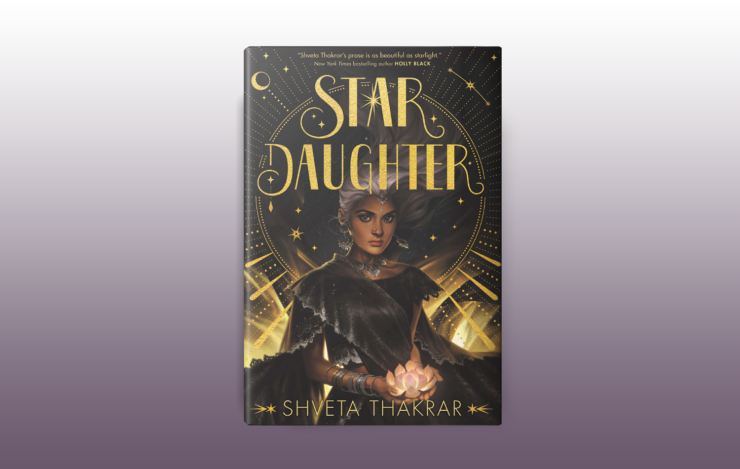Welcome back to the Please Adapt column! This month, I’m shining a celestial spotlight on Shveta Takrar’s Star Daughter. In my review, I praised the novel for its unique premise and relatable story. Today, I’ll revisit the book and outline the myriad reasons it deserves a stellar on screen adaptation.
Minor spoilers will follow, but they mainly involve setup for the story—nothing beyond what you might find in an online summary or back-cover synopsis.
The Story So Far
Star Daughter was Shveta Thakrar’s debut novel, and it arrived to significant praise in 2020. It was among the finalists for the Nebula alongside previous “Please Adapt” candidate Elatsoe and eventual winner A Wizard’s Guide To Defensive Baking by T. Kingfisher. Star Daughter also became a Junior Library Guild Gold Standard selection.
Well-deserved praise from the bookish community and solid reviews marked Thakrar as an author to watch. As for an adaptation? There’s precious little info at the moment. I couldn’t find even a smidgen of a hint at a Star Daughter show or movie. But these things take time, and hopefully the bigwigs in Hollywood will catch onto this wonderful novel and give it the treatment it deserves.
A Grounded Tale…
This heading is going to sound like an oxymoron at first, and that’s warranted. But stay with me. Star Daughter offers a magical, mystical tale set primarily in the realms of the stars…but protagonist Sheetal Mistry lives on earth, and her problems feel deeply human.
Of course, being half-star can complicate things like “being a human on earth.”
Buy the Book


Star Daughter
Sheetal’s mother is a star—a literal, shining star, not a celebrity. Her mom left earth when Sheetal was seven, leaving her to live a normal-ish life with her extended family.
On Sheetal’s 17th birthday, her star-power starts interfering with her daily life, and she can’t control it. She begins to hear a star song, which she believes to be her mother calling her to the realms above.
Meanwhile, Sheetal and her boyfriend Dev are hitting a new stride in their relationship, and she’s really happy with him. The pull of the stars above threatens her new balance, but it’s becoming harder to ignore…
We’ll get to the starry details in a minute, but this is an excellent place to highlight Star Daughter’s earthside story. Sheetal lives a life many of us might recognize on some level: She has school, a boyfriend, and a family. She lives a pretty happy life, all things considered. As she learns more about her heritage and starts feeling the call of the stars, she is naturally hesitant to embrace it and risk upending her entire existence. It’s the kind of dilemma that’s a staple of coming-of-age stories for good reason, and Thakrar does a fantastic job laying the foundation for Sheetal’s story, brick by relatable brick.
For an adaptation to work, the characters need a spark, something to make us care. Sheetal’s life is presented in such a fun and familiar way—it’s easy to get caught up in, and it’s also easy to see yourself in her, whether you’re also 17 or remembering your teenage struggles, feelings, and preoccupations. Viewers could easily find themselves on Team Sheetal, and they’d do it without much prodding.
A freak accident with her newfound abilities turns Sheetal’s world topsy-turvy. She injures her father with her star power, and only the blood of a full star can heal him. After following a narrative firmly rooted in our world up to this point, Sheetal’s entire story changes. Here’s where things get magical, and where an adaptation would have a chance to embrace the wonders of Thakrar’s imaginative tale.
…And a Celestial Tale
Sheetal’s aunt gives her a letter from her mother. It instructs Sheetal to join her mother in the stars’ domain. Answering the call, Sheetal brings her best friend Minal along for the journey. She sees her mom for the first time in ten years and gets a crash course in star politics. The current rulers of the stars are stepping down. The Nakshatras (star houses run by families) must compete in a competition to decide who takes over. The competition pits mortals against one another, tasking them with creating an art piece while drawing inspiration from a star. Good thing Minal came along, huh?
Sheetal has to learn fast. She must meet her distant relatives, learn the rules of the competition, navigate the politics of the Nakshatras, and plan a course that will earn her house a win. All the while, she needs to search for star blood she can use to save her father.
Here again, Sheetal proves an excellent window into a world, though this time the world is strange and unknown rather than warmly familiar. Sheetal acts as the audience’s eyes and ears as she finds her way, lending a spark of awe and wonder to everything she encounters in the land of the stars. In terms of on-screen visuals, the settings would be a stunning draw for viewers all on their own.
Also, we should factor in the competition. Visual effects would yield vibrant results throughout the various stages: Visual arts, verbal storytelling, singing…they’re all perfect opportunities to showcase unique art forms and dip them into a well of star-fueled magic.
Star Daughter’s hero arc introduces readers to an intricate and politically intriguing new world, one that begs to be brought to shimmering life on screen.
Starry-Eyed Mythology
Thakrar’s inspirations are apparent throughout the book, and that brings me to my final point. We’ve all read, heard, and seen countless reimaginings of Greco-Roman history, myth, and legend. Egyptian mythology is also a familiar source for pop culture, with a starring turning most recently in Marvel’s Moon Knight. But Thakrar’s Star Daughter brings Hindu cosmology and mythology into the mix, adding an extra layer of fascination for readers familiar with Southeast Asian folklore and serving as an irresistible introduction for readers who aren’t.
For example, Star Daughter features a scene in which Sheetal and Minal wander a magical Night Market filled with beings drawn from the deep and beautiful realms of Hindu folklore. As I read, I rejoiced whenever I encountered an unfamiliar word or description, eager to look up the mythological origins of the characters in question and gain greater insight into their experiences.
I’ll leave the details for you to discover, should you decide to pick Star Daughter for yourself. The book is chock-full of intriguing references and mythological elements, and to see them brought to life on movie screens would be a truly special experience.
Outlook: Moderate
Star Daughter more than earns its keep as a book alone, of course. It’s worth any reader’s time. Shveta Thakrar serves up a wonderful cast and an engrossing plot, pulling from a fascinating pantheon of mythological beings and gods.
Yet, despite earning recognition, awards, and general praise from fans and critics alike, an adaptation in the very near future doesn’t seem likely as of this writing. It’s a shame, because there is such a demand for stories like this: stories about coming into your own, learning about where you came from, and eschewing expectations to embrace your true self. With the added trappings of a gorgeous celestial realm and compelling court politics, Star Daughter has a hell of a lot going for it.
I still hold out hope for an eventual onscreen treatment, but for now, I’ll stick to enjoying the excellent book and look forward to all of Shveta Thakrar’s future work.
Speaking of which, Thakrar’s second novel, The Dream Runners, just released last month! *Adds to TBR.*
Next Up: Something Big
I’ve been pondering a rather large Please Adapt column about a certain author’s beloved fantasy works. Right now (well, next month) feels like the perfect time to do it. Until then, happy reading!
Cole Rush writes words. A lot of them. For the most part, you can find those words at The Quill To Live or on Twitter @ColeRush1. He voraciously reads epic fantasy and science-fiction, seeking out stories of gargantuan proportions and devouring them with a bookwormish fervor. His favorite books are: The Divine Cities Series by Robert Jackson Bennett, The Long Way To A Small, Angry Planet by Becky Chambers, and The House in the Cerulean Sea by TJ Klune.










